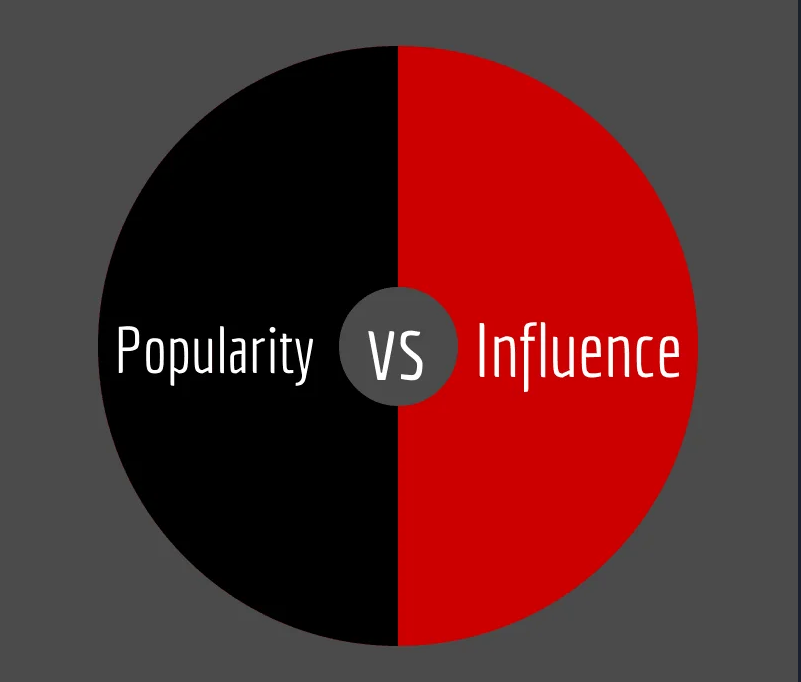The 9-Minute Morning Routine That Changes How You Approach Your Workday

You have tried the 5 AM wake-ups, the 30-minute journaling sessions, and the cold showers, only to quit by Tuesday. Stop feeling guilty: highly effective mornings don't need to be exhausting or complicated.
Most elaborate routines are unsustainable fantasies that set you up for failure before 8 AM. The true secret to peak workday performance isn't adding an hour to your morning; it's strategically utilizing nine pivotal minutes to proactively prime your mind, anchor your focus, and reduce stress hormones.
This is the precise, high-leverage 9-Minute Routine that successful professionals use to achieve clarity and avoid the common traps of digital burnout.
The power of this specific 9-minute system lies in its structure. It’s built on intentionality, leveraging the brain's transitional state upon waking. Research in habit formation shows that short, distinct, single-purpose segments lower the barrier to entry while leveraging the Zeigarnik Effect.
Once you commit to the first minute, the momentum pulls you through the rest. Furthermore, the way we introduce stimuli in the first nine minutes affects our stress hormones and cognitive clarity. Rushing straight to digital demands floods the brain with cortisol. This system counters that reactive state with deliberate, proactive anchors.
The entire routine is broken down into three phases: De-Fuzzing (Minutes 1-3), Priming (Minutes 4-6), and Anchoring (Minutes 7-9). This is the perfect formula for reclaiming your mornings.
Phase 1: The De-Fuzzing Protocol (Minutes 1–3)
The first three minutes are dedicated to clearing the residual mental fog and creating a conscious separation between the serenity of sleep and the chaos of the workday. We prevent the external world from hijacking your internal state before you've even fully transitioned.

Minute 1 is the Zero-Screen Rule: The moment your feet hit the floor, your phone remains untouched. Use an old-school alarm clock placed across the room to force you to physically get up, focusing solely on transitional movement.
Checking your phone first triggers an immediate release of stress hormones, placing you in a state of reactive stress. The zero-screen rule acts as a shield against this anxiety, preserving your mental energy for actual work problems later on. Do not negotiate with the urge to check your phone.
Minute 2: Hydration and Posture Check, immediately drink a full glass of water. Your body is naturally dehydrated after sleep, and even mild dehydration impairs focus. Rehydrating is giving your brain necessary fuel.
While drinking, perform a quick posture check: stand tall, roll your shoulders back and down twice, and take one deep, audible breath. This physical signal stimulates the vagus nerve, activating the parasympathetic nervous system for calm engagement rather than rushed reaction.
Minute 3: The Sensory Wake-Up, splash cold water on your face or neck. This is a gentle, controlled use of the mammalian diving reflex. The sudden cold immediately stimulates your nervous system, providing a brief, non-chemical jolt of alertness that snaps the brain out of its grogginess.
This deliberate, sharp change in physical sensation clears the last remnants of mental fog, signaling to your brain, "We are awake, and we are ready."
Phase 2: Priming the Cognitive Engine (Minutes 4–6)
With your body physically alerted, this phase shifts focus to the mind, setting the cognitive agenda and ensuring your brain focuses on what you decide is important, not what external notifications demand.

Minute 4 is the Core Focus Sentence: Grab a notepad (not your phone!) and write down a single, clear, one-sentence answer to this question: “If I accomplish only one thing today, what makes today a success?” This is your Most Important Task (MIT).
By forcing yourself to identify and write down just one thing, you create an undeniable priority anchor for your entire day. This written statement acts as a filter against distractions, making this an act of deep, proactive focusing that gives your workday a clear directional compass.
Minute 5: The Gratitude Scan. Without writing them down, mentally list three things you are genuinely, specifically grateful for right now. The key is specificity. This deliberate practice of gratitude increases levels of dopamine and re-focuses your brain away from scarcity and stress toward abundance.
By making the items specific, you deepen the emotional benefit and create a small but powerful wave of positive neurochemistry. It’s an immediate, one-minute mood lift.
Minute 6, is the Quick-Visual Success Rehearsal. Close your eyes and visualize yourself successfully completing the Core Focus Sentence you defined in Minute 4. See yourself sending that final email or successfully navigating that tough conversation.
By mentally rehearsing the successful outcome, you are pre-loading the neural pathways, reducing anxiety when the actual moment arrives. This technique also helps identify friction points, turning abstract stress into concrete, solvable problems before you even sit at your desk.
Phase 3: The Productivity Anchor (Minutes 7–9)
The final phase solidifies your new, calm, and focused state, creating a seamless bridge between your morning intentionality and the moment you start working.
Minute 7 is the Energy Reset Walk. Spend a minute walking, even if it’s just around your room. Focus on the simple act of putting one foot in front of the other. Do not look at anything digital.
This physical anchor transitions you from internal focusing to external readiness. Light movement increases blood flow, which is crucial for cognitive performance. It is the final physical separation from the ‘sleep’ part of your life.
Upon arriving at your workspace, spend Minute 8: The Desk Detox. Clear one small area, just enough space for your hands and tools. Remove one distraction and ensure your primary workspace is tidy. A cluttered environment leads to a cluttered mind.

This deliberate act of tidiness provides an instant visual signal of control, and research shows that working in a clean, organized space reduces the mental load. This small, deliberate act prepares your physical space to support the focused mental state you just created.
The final step, Minute 9, is The Pre-Game Power Song. Put on headphones and play a single piece of music, it must be non-lyrical and entirely predictable (the same song every day). Listen to the first 60 seconds of that track.
This consistent song creates an auditory anchor, instantly signaling to your brain: "It is now time to shift into deep work mode." This ritualistic use of sound helps your brain achieve the focused Alpha wave state necessary for high-quality work, eliminating the common struggle of trying to "force" focus.
When the 60 seconds are up, you are ready to open your laptop and begin your first task, your Core Focus Sentence.
The Exponential Payoff: From 9 Minutes to 9 Hours
The true power of this routine is not in the individual steps, but in their sequencing and non-negotiable timing. You are executing a strategically engineered sequence designed to move you from a reactive state to a proactive state in the most efficient time possible.
When you invest nine minutes in this deliberate manner, you fundamentally change your cognitive approach in three significant ways. First, You Own the First Decision: By committing to the Zero-Screen Rule and defining your Core Focus, you assert control over your day, shifting from being a reactor to a creator.
Every other demand is filtered through the lens of your pre-defined success metric, instantly reducing decision fatigue. This is the difference between working harder and working smarter.
Second, You Create Emotional Buffer: The Gratitude Scan and Success Rehearsal build a powerful emotional buffer. You start your day from a position of calmness and perceived success, which makes you more resilient to inevitable setbacks. This routine provides a stable foundation for the often-turbulent structure of modern work.
Finally, You Prime for Flow State: The entire routine is an act of neurological priming that prepares your brain to enter a flow state, the mental state of fully immersed, energized focus. The combination of mental clarity, emotional elevation, physical movement, and auditory signaling creates the perfect on-ramp to deep, uninterrupted work. This minimizes the time wasted on "warming up," allowing you to hit peak productivity immediately.
Ultimately, the 9-Minute Morning Routine is not a luxury for the privileged; it is a necessity for the serious professional. It’s an easy-to-implement framework that respects your time while dramatically improving your output, your mood, and your sense of control. Start today, and watch how quickly nine minutes can transform your nine hours.
You may also like...
Nigeria's World Cup Dream Crushed: DR Congo Delivers Heartbreak in Playoff Shocker!

Nigeria's 2026 World Cup hopes were dashed after a penalty shootout loss to DR Congo in a tense playoff final. Star stri...
Boxing Bombshell: Jake Paul vs. Anthony Joshua Mega-Fight Set for December 19 Showdown!

YouTuber-turned-boxer Jake Paul is set to face two-time unified heavyweight champion Anthony Joshua in a professional bo...
Hollywood's Elite Collide: Tom Cruise and Ariana Grande Dazzle at Star-Studded Governors Awards!

The 16th Governors Awards celebrated industry titans Tom Cruise, Debbie Allen, and Wynn Thomas with Honorary Oscars, and...
Anime Phenomenon Dominates! 'Demon Slayer: Infinity Castle' Conquers China Box Office!

China's box office surged to $79.7 million over the November 14–16 weekend, driven primarily by the blockbuster debut of...
Ice Spice Dives into Bikini Bottom: Rapper Makes Voice-Acting Debut in New 'SpongeBob' Film!

Rapper Ice Spice is set to make her voice-acting debut in "The SpongeBob Movie: Search for SquarePants," premiering on D...
Star-Studded Lineup Revealed: Who's Hitting the Stage at the 2025 CMA Awards!

The 2025 CMA Awards are set for November 19, hosted by Lainey Wilson and broadcasting live from Nashville's Bridgestone ...
MCU Failed to Impact This Actor, But Star Wars Changed Everything!

Katy O'Brian discusses her multifaceted career, highlighting how joining major franchises like Marvel and Star Wars surp...
IT: Welcome to Derry Stars Reveal 'Gut-Wrenching' Finale Secrets!

The HBO prequel series 'IT: Welcome to Derry' delves into the origins of the terrifying entity Pennywise in 1962, explor...





